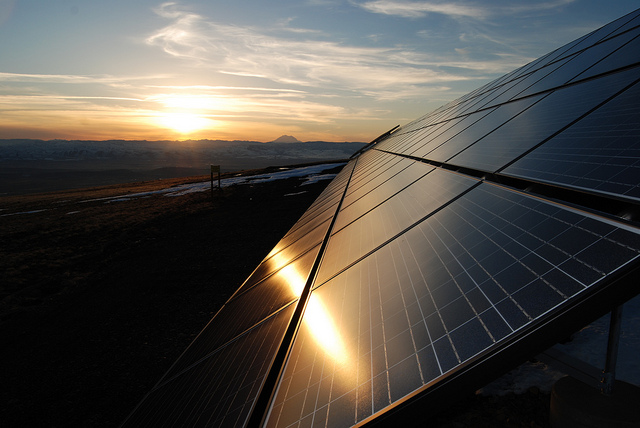
The economics of solar power are improving. It is a far more cost-competitive power source today than it was in the mid-2000s, when installations and manufacturing were taking off, subsidies were generous, and investors were piling in. Consumption continued rising even as the MAC Global Solar Energy Index fell by 50 percent between 2011 and the end of 2013, a period when dozens of solar companies went bankrupt, shut down, or changed hands at fire-sale prices.
The bottom line: the financial crisis, cheap natural gas, subsidy cuts by cash-strapped governments, and a flood of imports from Chinese solar-panel manufacturers have profoundly challenged the industry’s short-term performance. But they haven’t undermined its potential; indeed, global installations have continued to rise—by over 50 percent a year, on average, since 2006. The industry is poised to assume a bigger role in global energy markets; as it evolves, its impact on businesses and consumers will be significant and widespread. Utilities will probably be the first, but far from the only, major sector to feel solar’s disruptive potential.
Economic fundamentals
Sharply declining costs are the key to this potential. The price US residential consumers pay to install rooftop solar PV (photovoltaic) systems has plummeted from nearly $7 per watt peak of best-in-class system capacity in 2008 to $4 or less in 2013.1 Most of this decline has been the result of steep reductions in upstream (or “hard”) costs, chiefly equipment. Module costs, for example, fell by nearly 30 percent a year between 2008 and 2013, while cumulative installations soared from 1.7 gigawatts in 2009 to an estimated 11 gigawatts by the end of 2013, according to GTM Research.
While module costs should continue to fall, even bigger opportunities lurk in the downstream (or “soft”) costs associated with installation and service. Financing, customer acquisition, regulatory incentives, and approvals collectively represent about half the expense of installing residential systems in the United States. Our research suggests that as they become cheaper, the overall costs to consumers are poised to fall to $2.30 by 2015 and to $1.60 by 2020.
These cost reductions will put solar within striking distance, in economic terms, of new construction for traditional power-generation technologies, such as coal, natural gas, and nuclear energy. That’s true not just for residential and commercial segments, where it is already cost competitive in many (though not all) geographies, but also, eventually, for industrial and wholesale markets. Exhibit 1 highlights the progress solar already has made toward “grid parity” in the residential segment and the remaining market opportunities as it comes further down the curve. China is investing serious money in renewables. Japan’s government is seeking to replace a significant portion of its nuclear capacity with solar in the wake of the Fukushima nuclear accident. And in the United States and Europe, solar adoption rates have more than quadrupled since 2009.